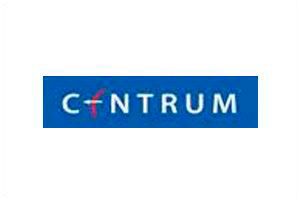 Crédito: Liufuyu / Envato Elements
Crédito: Liufuyu / Envato ElementsSustainable investments in C&I Solar - Gaining momentum in India?
| CONTENT CREDIT | |
 |
The challenges and opportunities in the open access projects vis a vis Rooftop solar
Open Access presents a large opportunity to developers and customers. India is a unique market where Open Access power generation is allowed. This is predominantly present only in developed markets and even many developing markets do not have Open Access. Comparatively, India has far more progressive policies. Genesis of Open Access hails from a shortage of power where off-takers could set up their own power plant. Currently Open Access is more prevalent among the industrial sector as they need surety of power.
Commercial & Industrial (C&I) segment is benefitting the most from Open Access. Distributed solar is not growing as much (~1 GW a year). Difficult to bring capital for such a small size of development. Scale is an important element to obtain funds from investors. With scale, economics and efficiency get better. As in Open Access, one customer can be a sizable customer by volume for the developer, hence there is a better partnership between the customer and the power supplier. In an Open Access set up, the developer has total control of the asset as it is based in his premises vis a vis rooftop solar which is based in the customer’s premises. Another impetus for the growth of Open Access is corporations fast tracking their move to sustainable sources of energy. However, an important factor in Open Access is regulations, as the developer is dependent on the Government for waiving off the charges. The push towards implementation of solar due to a country wide target is also helping push Open Access.
Attracting big ticket investments in the C&I Solar sector
Almost half of the power in India goes to C&I sector; however, only a fraction of this is from solar. Most of the customers have a green objective to procure renewable power, however the other motive is also about reducing the cost. Our country has immense solar and wind potential, hence a combination of solar and hybrid power is possible. Another credible point is the strong local debt market in India. Consistent policies and time bound processes have provided impetus to investments in the sector. Customer Self - Supply charges along with other charges should be moderated over a period of time to provide growth. The successful InvIT structure is already present for the distribution sector which will attract further investments.
Initiatives taken by the government are on point, however some of these result in increased cost of power. e.g. Due to the implementation of Basic Customs Duties, equipment cost has gone up, resulting in Independent Power Producers (IPPs) having to sell power at a higher rate. Instead measures can be taken to reduce cost of manufacturing, such as interest subvention, should be taken to help the manufacturing sector. Another factor which can help is standardisation of the Power Purchase Agreements (PPAs) as customers negotiate terms and conditions as each developer wants to provide the best terms. Certainty in the legal framework is of paramount importance from a financing point of view. On a flip side, lenders need to accept the risk of C&I and come up with innovative structures.
Key factors influencing the procurement of open access power by customers.
The C&I market has recently come out of a phase where not many developers would be able to secure a PPA; however, today C&I has become a more mature market as corporates have taken steps towards decarbonising their footprint and hence look for a strong partner to meet their sustainability goal. As developing capacity requires high investment and capital, it has helped organise the market in a better way. Another important aspect to impact the C&I market is the new Electricity policy. Customers are taking a view that the group captive model to save on charges is attractive.It is being observed that banks have started to be more acceptable towards C&I counterparties vs the historical times where they needed an NTPC and SECI PPA.
Among regulatory uncertainties, it is difficult to promise the customers of long term power without any issues. Policies should not be revised on a retroactive basis as has been done recently in some instances lately. Policies such as net metering, large scale development can change the existing Open Access environment; however these changes need to be part of revisions in the electricity act. Several global concepts such as wind-solar hybrid can be adapted in India.
Achieving an optimal Risk-Return Trade off
There are mainly 3 types of risks considered while decision making regarding Open Access - Project related, Legal & contractual and policy related.
Project related risk – As long as the focus is on smaller projects (25 to 75 MW), this risk can be mitigated as the offtaker’s portfolio to procure power remains diversified.
Legal and contractual risk – Disputes in state PPAs have existed. However, few disputes have been addressed favourably. Not many disputes seen in Open Access but confident that such disputes shall be taken care off.
Policy risk – As policies are not long term in nature, they are prone to be revised and hence create uncertainty.
Reforms and revising the policies will reduce risk. Devising solutions which are less dependent on concessions/ incentives / policy changes (such as hybrid power sources) will help mitigate the risks. C&I space has risk but also rewards as it provides the opportunity to make dynamic contracts between developer and customer. Customers and developers work in cohesion to benefit each other, which itself is a significant mitigation of risk.
Key learnings from building a C&I Solar platform from the perspective of an entrepreneur
Regulatory challenges to convince discoms on the wheeling and banking arrangements in the early days were faced as it was unheard of. Challenges from customers included scepticism that the developer will be able to provide electricity; however, the corporates were keen on procuring power from green sources. Lenders required a strong balance sheet for providing funds, hence there had to be a strong backing of a promoting company. Another challenge was also to find quality manpower as the C&I was a new concept and hence convincing good talent to join such an idea was difficult. Industry is glad to note that over the years, the C&I market has developed and matured, with most of the early challenges having been met successfully.
New electricity act entails & possible challenges for implementation
This is the fourth time the Govt is trying to revise the electricity act starting from 2014 until date. Latest version highlights delicensing. Act is weakly worded and has a lot of difficulty in the understanding and interpretation. New amendments open up new questions instead of clarifying old ones. There is a need to improve the existing C&I framework. Better approach is certainty in the long term charges so that there is long term assurance for potential investors. Pushing for a more centralised approach is required to make it more transparent wrt Open Access sector. The Electricity Amendment Act also plans to improve the regulatory framework and efficiency and implementation. Will be a gradual push rather than an exponential change.
Expected growth in the Open Access sector
The Open Access market opened up initially due to Karnataka, else in other states it was range bound. Going ahead it is expected that Gujarat, Maharashtra, TN, Chhattisgarh, UP, Karnataka , will have Open Access capacity addition in the next few years. Currently without the Electricity Amendment Act, there is no other framework to ask states to agree to certain terms. States are losing their high value customers to C&I and hence will need to be subsidised with the Open Access charges.
Faster decision making by regulators who understand the nuances of the legal framework is imperative for the growth of the sector. Privatisation in the sector shall get better technology and better choices i.e. a choice to select renewable sources that too at a cheaper rate. It is important to move beyond the electricity act and concentrate on the implementation. Overall the industry stakeholders are optimistic about the future but expect a long, tough but rewarding journey ahead.




